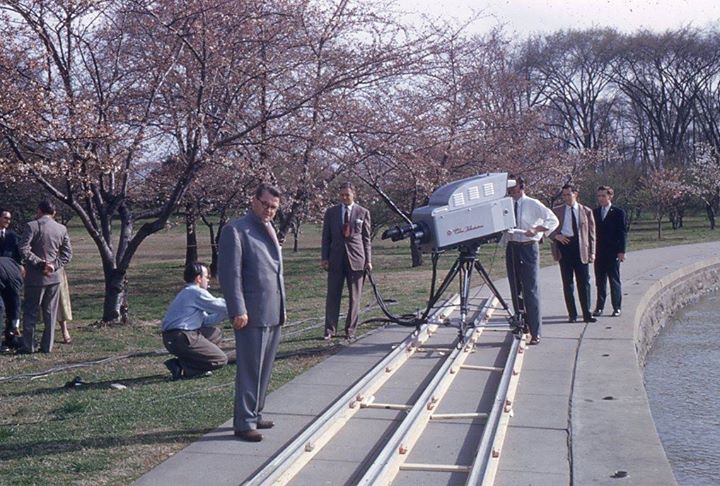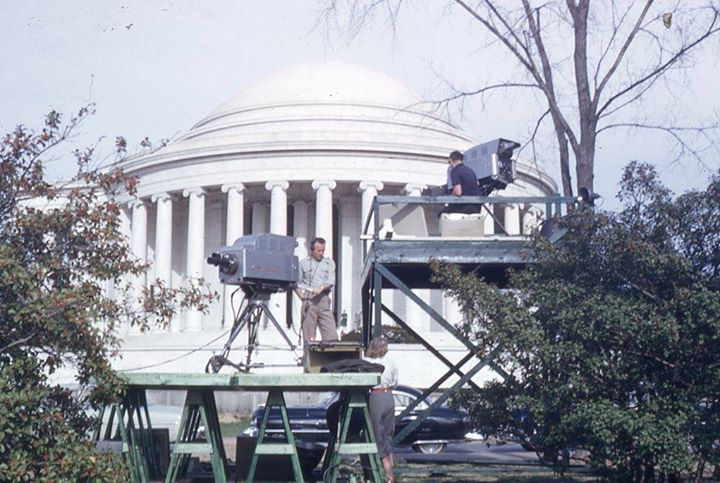- Home
- TV History
- Network Studios History
- Cameras
- Archives
- Viewseum
- About / Comments
Skip to content
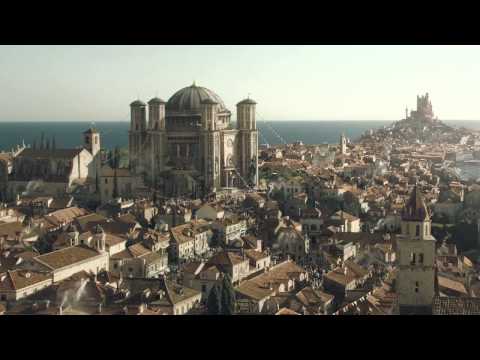

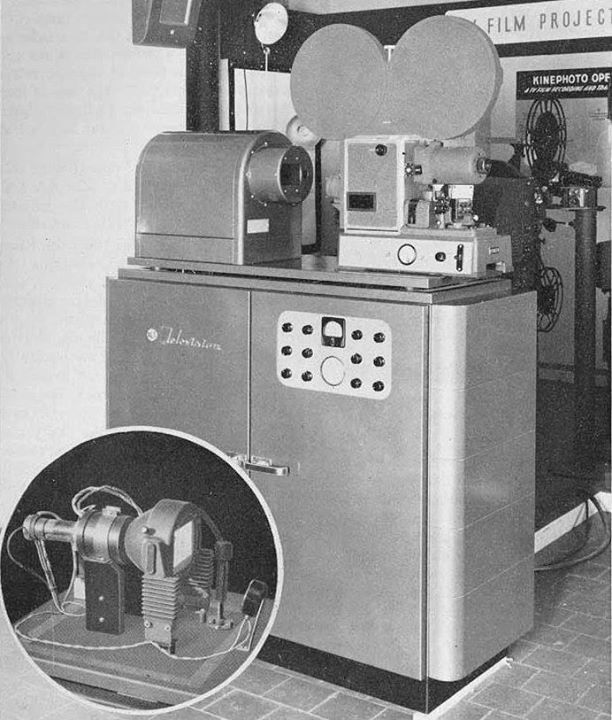

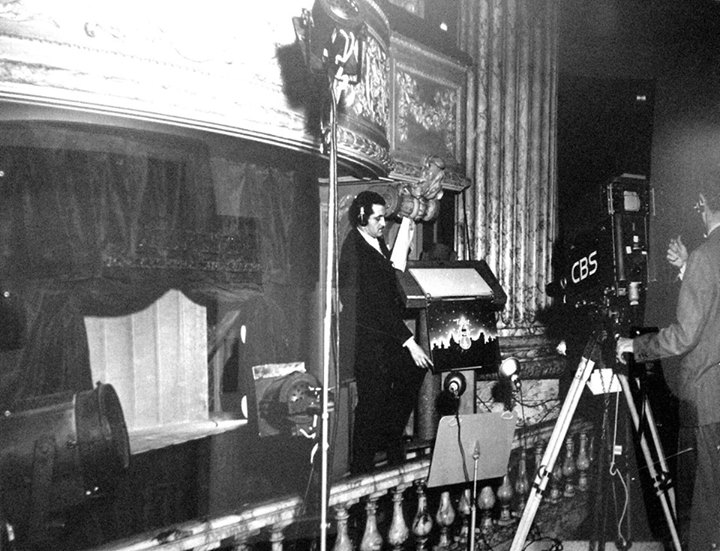


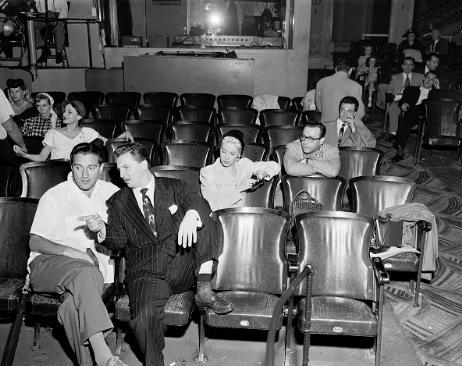
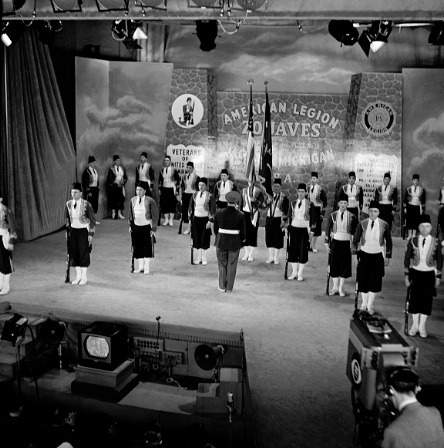
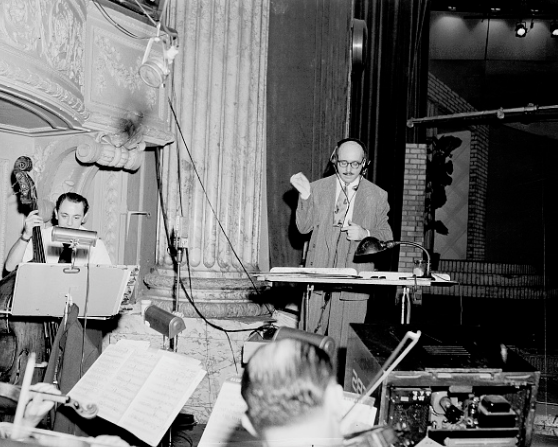

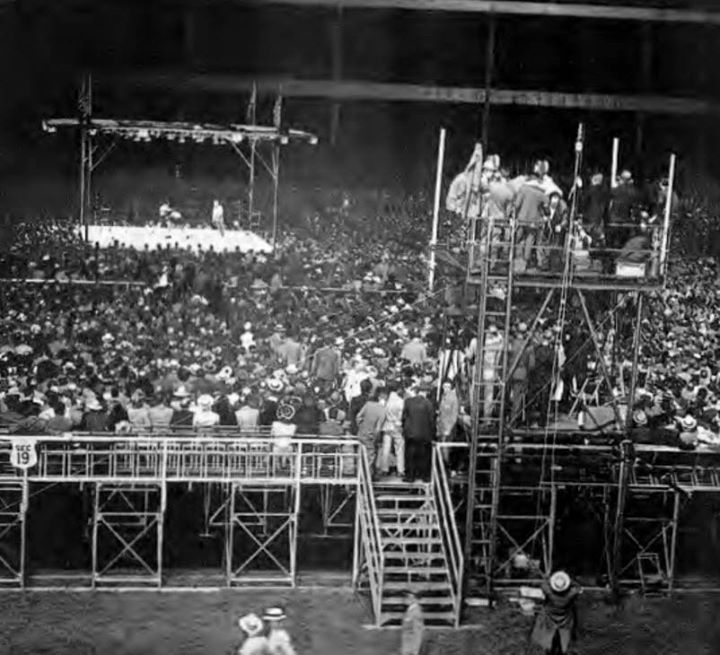

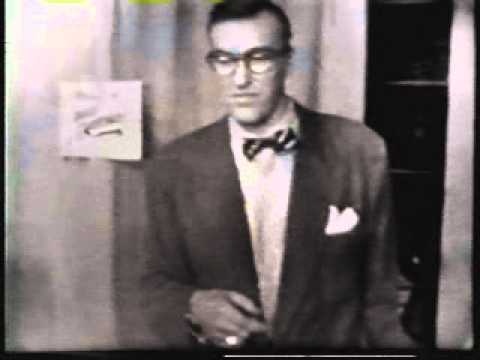

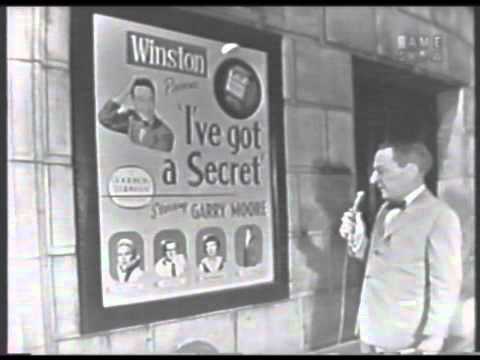



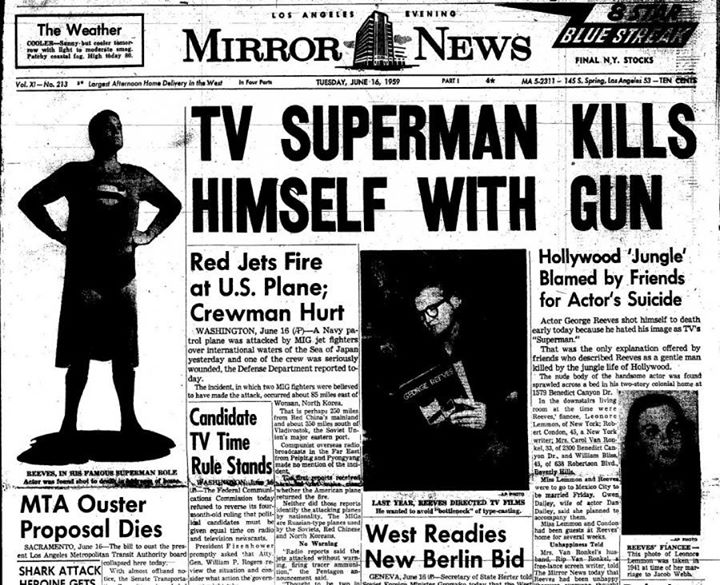

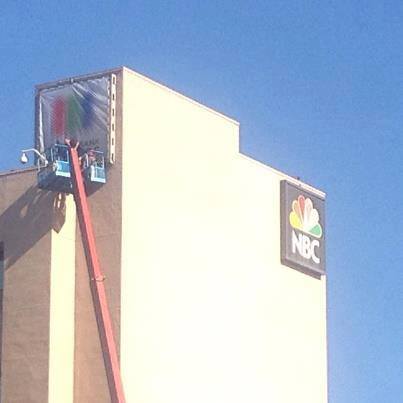



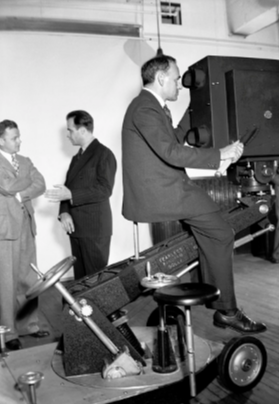

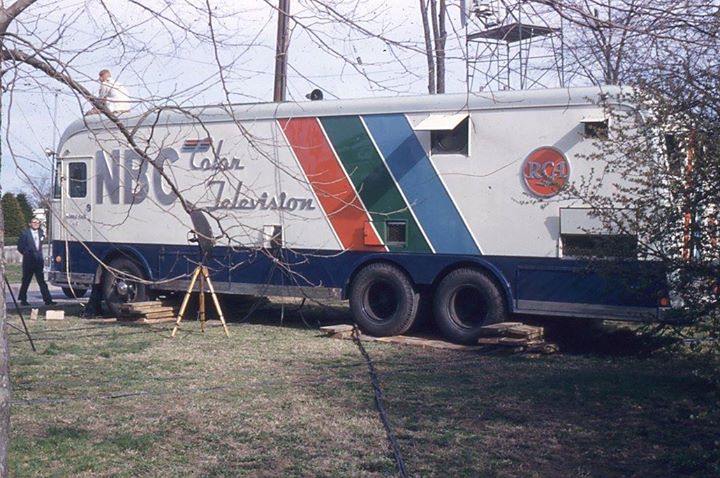

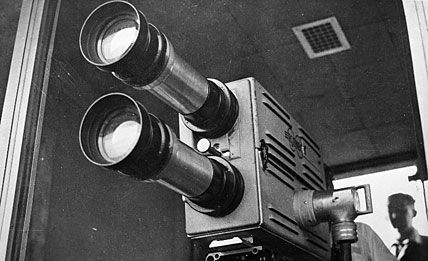

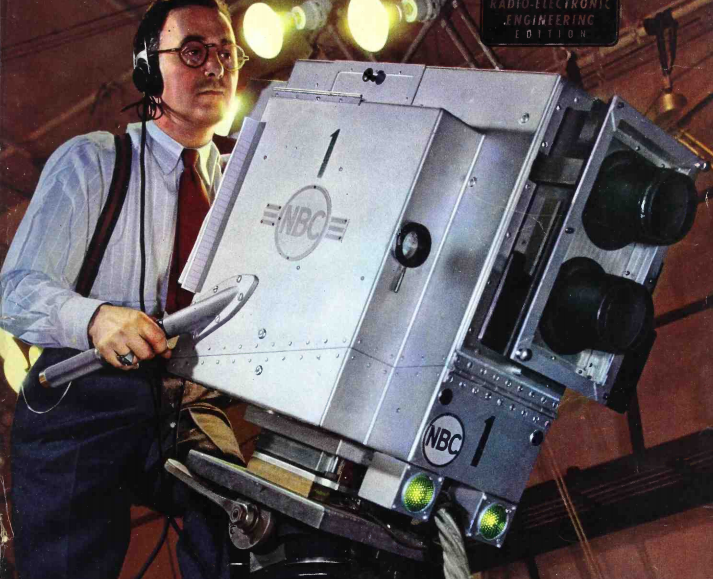



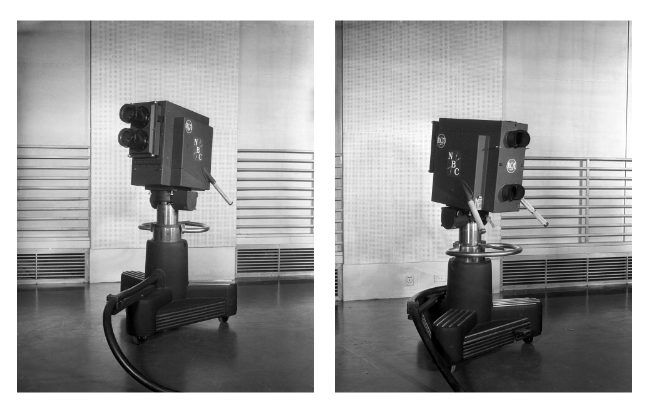

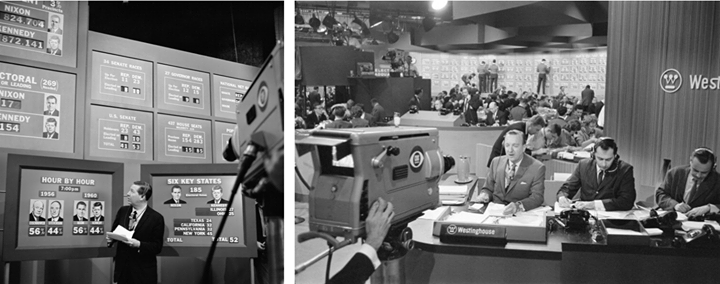

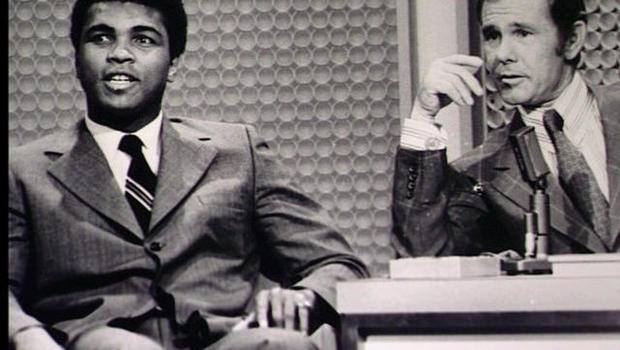

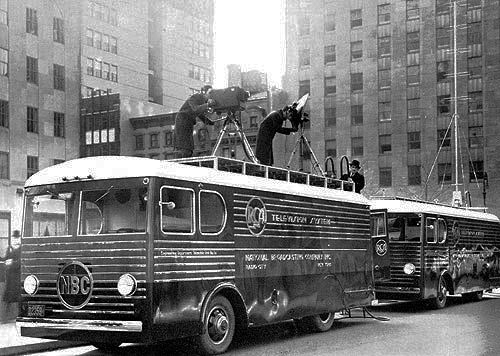



Posts in Category: TV History
Page 22 of 136
« Previous
1
2
3
4
5
6
7
8
9
10
11
12
13
14
15
16
17
18
19
20
21
22
23
24
25
26
27
28
29
30
31
32
33
34
35
36
37
38
39
40
41
42
43
44
45
46
47
48
49
50
51
52
53
54
55
56
57
58
59
60
61
62
63
64
65
66
67
68
69
70
71
72
73
74
75
76
77
78
79
80
81
82
83
84
85
86
87
88
89
90
91
92
93
94
95
96
97
98
99
100
101
102
103
104
105
106
107
108
109
110
111
112
113
114
115
116
117
118
119
120
121
122
123
124
125
126
127
128
129
130
131
132
133
134
135
136
Next » 

“Game Of Thrones” Video Effects…TV’s Ultimate Techno Tapestry
On June 23, 2016
- TV History
“Game Of Thrones” Video Effects…TV’s Ultimate Techno Tapestry
It literally boggles the mind to see the depth of video effect detail that goes into each season of this show, but believe it or not, HBO’s “Boardwalk Empire” was just as jam packed with VFX.
Costume dramas, from bygone eras, are hard to make believable without great attention to detail, but with the rise of CGI, anything seems possible now…if you have the budget.
Here’s a look at some of the top image manipulations from the first five seasons, that goes from dragons to giants, but as you’ll see, cityscapes, seascapes, mountains, battlefields and more are layered together to make the illusion as real as it gets. -Bobby Ellerbee
Game of Thrones – Making Of Season 1-5 Visual Effects VFX Watch more awesome videos on our channels and pages. Click Here to Subscribe! ► http://bit.ly/Chang…
June 21, 1948…First TV Network Pool Event & Debut Of RCA Kinescope
On June 21, 2016
- TV History
June 21, 1948…First TV Network Pool Event & Debut Of RCA Kinescope
The first official use of kinescope recording would come on June 21 at the Republican National Convention in Philadelphia, but it was not used in the way we generally think of kinescopes, which is recording programs to film and expressing them to affiliates not able to connect to the network live. Here’s the story…
This event was also the first ever pooling of equipment, and lines by the television networks including NBC, CBS, Dumont and ABC.
There were four pool cameras (RCA TK30s) in the hall, and one at a quieter spot for representatives from each network to do a 15 minute per hour commentary. The 4 hall cameras were on the main line out, and the single commentary camera was on a second line out. Only NBC had the ability to record their commentary and insert it at a more opportune time, rather than interrupt a major speech on the floor, when their 15 minute live slot came up.
All together, the pooled convention coverage was shown live on 18 stations in 9 cities, which included New York, New Haven, Newark (ABC), Boston, Albany-Schenectady, Baltimore, Washington and Richmond.
In July, The Democratic National Convention was held at the same arena, and the same pooling process was used by the networks again. In this video is Harry Truman’s acceptance speech, and as you can tell by the haloing on the mikes, this is a recorded video signal, and not film, so you can see how good the results were on this kinescope from NBC.
NBC Chief Engineer O. B. Hanson said in the June 17 press release (included below), that the system had been used for testing a few weeks before this.
NBC’s engineering department was quite busy that spring of 1948. They debuted not only the new Studio 6B (for television), but that same night, debuted “The Texaco Star Theater” there on June 8, 1948.
Just months before, NBC Television added Studio 8G, 3A and 3B, and around May of ’48, converted Studio 3H (Howdy Doody) from Iconoscope cameras to TK30 Image Orthicon cameras. All the while, preparations were being made for the Republican National Convention which was a historic first for television all around, with over one million viewers watching on the biggest nights of the convention on about 340,000 sets in those 9 cities. TV set manufacturers had ramped up production in the two months before the June convention to 45,000 a month and never backed off to a lesser volume. TV was on it’s way! Enjoy and share! -Bobby Ellerbee
June 20, 1948…Ed Sullivan Comes To Television
On June 20, 2016
- TV History
June 20, 1948…Ed Sullivan Comes To Television
On this day in 1948, CBS debuted “Toast Of The Town” from The Maxine Elliott Theater (CBS Studio 51). In the first photo, you see what looks like a set for a puppet show…it is not. When you watch the opening of the show at the link, you will see that miniature stage again in a whole new way…it is a mini proscenium for the opening billboards.
Actress Maxine Elliott had a long and successful career in the theater, but had always dreamed of owning her own one day. That day came December 30, 1908 when the beautiful 900 seat theater opened with gold silk wall paper, marbled foyers and lush velvet seats and curtains all around. Plays came and went, but the theater stayed afloat through the depression.
In 1941, the theater was leased to the Mutual Network for use as a radio studio but CBS was able to take over the lease in 1944 and made this CBS Radio Playhouse #5. In the spring of 1948, CBS began to look for place for their new Sunday night variety show, “Toast Of The Town” with New York Daily News columnist Ed Sullivan. Since it was such an intimate and handsome theater, this became their first television theater. The show debuted June 20, 1948 and stayed here till January 1953, when it moved to Studio 50. The show’s name was changed to “The Ed Sullivan Show” on September 18, 1955.
CBS leased the theater, at 109 West 39th Street, till 1959 when the owners sold it. It was demolished in 1960. More on the photos…enjoy and share! -Bobby Ellerbee
The camera on the left is the one that shot the opening, with the mini proscenium is right behind him. Ray Bloch and the orchastra are just in front of him, on the other side of the audience. As you will see, this will change in a few years with Bloch on this side after a camera ramp is added in the center. These first two photos are from the early days of the show, in 1948.
Standing on the stage, the control room is in the rear, behind producer Mario Lewis in the white short sleeve shirt.
This is also from Studio 51, but a few years later when a center camera ramp had been added. Probably around 1950.
Ray Bloch leading a rehearsal session. Notice, this is the theater box where the mini proscenium was in the 1948 photos. With the addition of the center camera ramp, it appears that the orchastra has moved to the left side of the theater now, probably around 1950.
Ed on stage in 1951 with the mini proscenium box now covered with a curtain, as the band is now on the floor behind where Ed is standing.
June 19, 1946…1st Image Orthicon Cameras & Network Sponsorship
On June 19, 2016
- TV History
June 19, 1946…1st Image Orthicon Cameras & Network Sponsorship
In the photos, you see the first RCA TK30s ever used anywhere. The introduction date was officially set for October of ’46, but the Lewis-Conn rematch was such a big deal that RCA rushed a few into production for the fight. Four to six TK 30s, and their two new trucks arrived two days before the fight.
The fight, at Yankee Stadium, was the first World Heavyweight Championship bout ever televised, and this was the first time an advertiser sponsored a network television program. The company was Gillette. “The Gillette Cavalcade of Sports” began on NBC radio in 1942 and when the Louis – Conn fight came along, they sponsored it both on radio and TV. On November 8, 1946, Gillette’s first regular Friday night television broadcast of “The Cavalcade Of Sports” show began on NBC, and ran till 1960. Here’s a sample.
At the time, the NBC Television Network was really only live in three markets, NYC, Philadelphia PA, and Schenectady NY, and kinescopes were still in the testing phase, but at this link is a rare kinescope test that shows the Louis – Conn fight and mentions the first use of the Image Orthicon cameras.
Newspaper reports on the television coverage were glowing. “These cameras had delivered the clearest, sharpest pictures ever and with four lenses on each turret, were able to offer a never before available range of shots per camera”. Enjoy and share. -Bobby Ellerbee


June 18, 1949…Dave Garroway & “The Chicago Style” Debut On NBC
On June 18, 2016
- TV History
June 18, 1949…Dave Garroway & “The Chicago Style” Debut On NBC
On this day in 1949, “Garroway At Large” debuted on the NBC television network, live from their WMAQ studios in Chicago. Originally airing at 10 PM EST on Saturday nights (and later Sunday nights), this one hour experimental musical variety show brought two new things to television…Dave Garroway, and a new on screen presentation style, also called “The Chicago School”.
When television began in New York, the shows adopted the familiar theatrical proscenium concept, separating the stage from the audience area. When Garroway was assigned to host on television, he abandoned the usual conventions for a more casual approach in which the reality of the studio was acknowledged. Followed by a single camera, he walked around the entire large studio space and simple abstract sets as he talked to guests and the TV viewer directly. This live staging technique, known as the “Chicago Style”, was developed further on Garroway’s next show…”Today”.
In the clip below, you can get a feel for the staging and visual tone of this style. There is more on the Chicago School here. http://www.richsamuels.com/nbcmm/tcs.html
Garroway began his broadcasting career modestly. Starting at NBC as a page in 1938, he later graduated 23rd in a class of 24 from NBC’s school for announcers. Following graduation, he landed a job at Pittsburgh radio station KDKA in 1939. After two years with KDKA, Garroway left for WMAQ radio in Chicago, and was introduced to the national television audience when he was chosen to host “Garroway At Large”, from June 18, 1949, to June 24, 1951.
At the same time he did the “Today” show, Garroway also hosted a Friday night variety series on NBC, “The Dave Garroway Show”, from October 2, 1953, to June 25, 1954. On October 16, 1955, he began hosting NBC’s live Sunday afternoon documentary “Wide Wide World”, continuing with that series until June 8, 1958. Another Friday evening variety show, “Dave’s Place”, was on the air in 1960.
He also hosted a WNBC radio show, “Dial Dave Garroway”, that went on the air as soon as Today wrapped up each morning. “Dial Dave Garroway” began in 1946 when Garroway was still working for WMAQ in Chicago.
When “Today” started on January 14, 1952, it was seen live only in the Eastern and Central time zones, broadcasting three hours per morning but seen for only two hours in each time zone. Since 1958, “Today” is tape-delayed for the different time zones. Peace! -Bobby Ellerbee
Dave Garroway on Sunday evenings way back when, on NBC. Way cool. So laid-back. You can’t tell me Garrison Keillor isn’t channeling this guy.


June 17, 1959…”I’ve Got A Secret”; Tour Of CBS Studio 59
On June 17, 2016
- TV History, Viewseum
June 17, 1959…”I’ve Got A Secret”; Tour Of CBS Studio 59
To celebrate their seventh anniversary on the air, all from Studio 59, “I’ve Got A Secret” host Garry Moore takes us on a tour of The Mansfield Theater, better known to us as CBS Studio 59 at 256 West 47th Street. As you’ll see, CBS Studio 62, The Biltmore Theater is across the street at 261 West 47th Street.
Below is a partial list of CBS shows from this studio. Enjoy and share! -Bobby Ellerbee
Play Your Hunch (1958)
The Burns & Allen Show (1950-51) first 6 shows
What’s My Line? (1951-60)
It’s News to Me (1951-54)
I’ve Got A Secret (1952-60)
Masquerade Party (1959)
To Tell The Truth (1959)
You’re On Your Own (1956)
G.E. College Bowl (1959)
Garry Moore daytime show (1950-1958)
Of All Things with Faye Emerson (1956)
Who’s Whose (1951)
What’s In A Word (1954)
Two In Love (1954)
Ted Mack & the Original Amateur Hour (1959)
Ship Ahoy (WCBS) (1951)
Take a Guess (1953)
Strike It Rich (1951)
Steve Allen (1950-1952)
The Show Goes On (1951)
Sam Levenson (1951-1952)
Guess Again (1951)
It’s Fun to Know (1951)
The Jimmy Dean Show (1959)
Live Like a Millionaire (1951-1952)
Anyone Can Win (1953)
Down You Go (1955)
Frank Sinatra (1950)
Name That Tune (1954-1959)
Robert Q. Lewis (1954)
Russ Morgan


June 16, 1930…The First Ever “Soap Opera” Debuts On WGN Radio
On June 16, 2016
- TV History
June 16, 1930…The First Ever “Soap Opera” Debuts On WGN Radio
https://www.youtube.com/watch?v=XWH8Xo6FclU
“Clara, Lu ’n Em” is thought to be the first soap opera ever to appear on radio in the US. It started as a local Chicago evening show on WGN on June 16, 1930, and moved to NBC Blue Network on Jan. 27, 1931. (At the link above is a few minutes of a 1936 show).
On Feb. 15, 1932, NBC moved it moved to a midday slot at 10:15 AM, and this made it the first ever daytime network serial, and set the precedent of serials for women sponsored by soap companies.
Colgate-Palmolive’s, Super Suds, dishwashing soap, was the sponsor when it moved to daytime on NBC Blue, but Colgate-Palmolive had sponsored the local and network evening shows too with ads for their Chipso Flakes laundry detergent.
Procter and Gamble eventually became the biggest sponsor of soap operas, but Colgate-Palmolive is thought to be the first.
Speaking of firsts, “Clara, Lu ’n Em” also is thought to be the first network radio show to run a contest. You could send in two Super Suds 10 cent box tops, or one 20 cent top, and hope to win a new Packard automobile worth $1,000.
The show is also thought to be the first radio program written by, performed by and managed by an all female company.
“Clara, Lu ’n Em” was developed in 1925 as a skit by sorority sisters at Northwestern University, Louise Starkey, Isobel Carothers and Helen King. When the three couldn’t find jobs during the Depression they took the skit to WGN in 1930.
The show came to an end in 1936 when Isobel Carothers died from pneumonia at the age of 32. The others decided not to continue, though they revived it on CBS in 1942 with another former sorority sister, Harriet Allyn. It didn’t last long. Allyn went with the show into syndication with another Chicago radio personality, Fran Allison, but the 1945 effort didn’t thrive either. Hats off to “Clara, Lu ‘n Em”! Well done ladies! -Bobby Ellerbee
June 16, 1959…Remember This Headline?
On June 16, 2016
- TV History
June 16, 1959…Remember This Headline?
I guess we’ll never know if it was suicide or murder, but I remember the day the news broke…you too?
It was a sad day for all of us kids of the ’50s, but it would have been worse had the news come while the series was still in production. Thankfully, it wrapped in April of ’58. -Bobby Ellerbee
June 14, 2014…NBC’s Last Live Show Airs From Burbank
On June 14, 2016
- TV History
June 14, 2014…NBC’s Last Live Show Airs From Burbank
I got this note the evening of June 13, 2014 from our friend Bob Meza, who’s worked for at NBC Burbank for nearly 40 years.
“Bobby: Just so you know, tomorrow, June 14, NBC Burbank will broadcast it’s last live show, which is on Telemundo, and they will move over to Universal starting Sunday. “Days Of Our Lives” is still on the lot, but it is not an NBC owned show. “Access Hollywood” will also remain on the lot in Studio 1 probably for another year. We will be pulling equipment out next week. Bob”
Below is a shot of the Burbank Studios signs replacing the NBC sings. Gone, but not forgotten. -Bobby Ellerbee
June 13, 1925…First US TV Demonstration
On June 13, 2016
- TV History
June 13, 1925…First US TV Demonstration
91 years ago today, Charles Francis Jenkins presented the first public demonstration of television in America, with a synchronized transmission of images and sound. Using an electro-mechanical Nipkow spot scanner, the silhouetted image of a toy windmill was broadcast wirelessly over a five mile path from a naval radio facility in Anacostia, to Washington DC, where it was viewed by members of the Federal Trade Commission, the navy and patent office officials.
Two months earlier, Charles Logie Baird had done almost the same at Europe’s first public demonstration at Selfridge’s Department Store in London. The Jenkins system used only “shadowgraph” images, which were silhouetted images, while Baird’s system used lifelike subjects (a dummy’s head) lit with and arc light. For more, here’s a good link. http://www.bairdtelevision.com/jenkins.html -Bobby Ellerbee
Exclusive! CBS Electronic Camera History Update…September 24, 1937
On June 11, 2016
- TV History
Exclusive! CBS Electronic Camera History Update…September 24, 1937
These two just found photos, taken at RCA’s Camden plant on September 24, 1937 show CBS brass on hand to inspect their first RCA Iconoscope camera, before taking delivery (details on the photos). THIS IS THE FIRST HARD DATE for CBS to own Electronic Television Cameras.
Yesterday, we saw this camera in the new Grand Central Studio 41 in photos dated September 1, 1939, which was shortly after the new transmitter began tests from the Chrysler Building.
So, where was it for two years? The answer…at the W2XAB studio somewhere on the 23rd floor of CBS headquarters at 485 Madison Avenue. CBS began television July 21, 1931 with a mechanical system from GE, but the experiment stopped about 18 months later. It ended two weeks before President Franklin Roosevelt took office, with the Great Depression in full swing.
Details are sketchy, but I think they began to dabble in TV again after Dr. Peter Goldmark was hired January 1, 1936. W2XAB needed to test with a live electronic camera, and RCA had three Iconoscope cameras in their test studio, 3H at 30 Rock, that had been in service since 1935.
Those first 18 months in 3H were very secretive and broadcast tests on their W2XBS were clandestine too, until they decided to let the world know about their progress. I think that after Goldmark was hired at CBS, he went over to take a look, and that soon after, an order for one camera was placed with RCA.
CBS eventually got 3 of the RCA Iconoscope cameras for Studio 41 and 42, but I don’t think they bought them until 1940. Since the switch from 220 lines to 441 lines happened in June of ’38, this camera would have the 441 line ability. After the other 2 came in ’40, they, with NBC’s cameras would have been updated to 525 lines in May of 1941, and all were repainted in the silver color to denote them as the new A500 version. Enjoy and share! -Bobby Ellerbee


June 9…A Big Day For Media History…6 Event Stories And Video
On June 9, 2016
- TV History
June 9…A Big Day For Media History…6 Event Stories And Video
June 9, 1948…WBZ Becomes New England’s First TV Station…
In Boston they called it T Day…the first day of television for the area. Remember, back then, stations only came on in the evenings because there was no daytime programming, and precious little at night. Congratulations and Happy Birthday BZ!
At the link is the first part of the 1983 anniversary show.
https://www.youtube.com/watch?v=l4fbEC4CWgY
Happy Birthday Donald! “Born” June 9, 1934…
http://youtu.be/A5dowCyaP7I?t=1m58s
At the link is Donald Duck’s debut! His first ever screen appearance came on the date of this ‘Silly Symphony’ cartoon called “The Little Wise Hen” from Walt Disney Studios. It’s cued to his entrance.
The Donald Duck character was created by Walt Disney when he heard Clarence Nash doing his “duck” voice while reciting “Mary Had a Little Lamb”. Disney wanted a character that was more negative than Mickey Mouse, so the bad-tempered Duck was born. Nash voiced the character from 1934 to 1983, training Tony Anselmo to take over. By the way, his full name is Donald Fauntleroy Duck!
62 Years Ago Today…”Have You No Sense Of Decency”…
http://www.youtube.com/watch?v=MO2iiovYq70
On June 9, 1954, Army counsel Joseph N. Welch confronted Sen. Joseph R. McCarthy during the Senate-Army Hearings over McCarthy’s attack on a member of Welch’s law firm, Frederick G. Fisher. Said Welch: “Have you no sense of decency, sir? At long last, have you left no sense of decency?” This famous exchange is caught in the short clip attached here.
“The Roy Rogers Show” Comes To An End….
This is the first ever episode of the TV classic and it aired on NBC as 6:30 (ET) Sunday night, December 30, 1951. The series ran one hundred new episodes on NBC for six seasons and ended on June 9, 1957. Beginning in 1961, CBS broadcast reruns of The Roy Rogers Show for three and a half seasons on Saturday mornings.
https://www.youtube.com/watch?v=tz59ibhFX2c
NBC Color Caravan Does First Broadcast…
On June 9, a crew of eighteen men did the tour’s first color remote from St. Louis in a two month tour of the US to introduce color television. The local stations, and major department stores along the way were pre stocked with RCA color monitors and sets for sale and display. The cities they visited also included Milwaukee, Chicago, Columbus, Cleveland, Washington DC, Baltimore and Ft. Meade Maryland.
Happy Birthday Cole Porter, Born June 9, 1891…
Some of the greatest songs ever came from this man…”I’ve Got You Under My Skin”, “Anything Goes”, “Night And Day”, Begin The Beguine”, “From This Moment On” and many, many more. Thanks for the great music Mr. Porter! -Bobby Ellerbee
June 8, 1938…The New RCA Orthicon Camera Debuts
On June 8, 2016
- Archives, TV History
This was a step up from the Iconoscope in it’s light sensitivity, but it was a remote camera and still needed daylight, or stadium lighting. The Orthicon was a hybrid of sorts, needing the added utility of Philo Farnsworth’s Image Dissector tube technology, which was finally incorporated into the Image Orthicon a few years later. More in the text block below. -Bobby Ellerbee
June 8, 1939…The First Orthicon Camera
On this day in 1938, two experimental RCA Orthicon cameras were put into service along side two RCA Iconoscope cameras at Ebbets field for a daytime game between the Dodgers and the Reds. This was televisions first ever broadcast of a major league baseball game and was only a month after the first ever college baseball game broadcast.
On top, we see the Orthicon camera which still did not have an electronic viewfinder, but the optical system shared with the studio style Iconoscopes…the field Iconoscopes had a gun sight. Notice also the wedge plate sticking our from under the camera…this mount is all new too as the field Iconoscope cameras slid onto the pan head from the side with the use of built in brackets.
Below, we see an article from Broadcasting Magazine that, although it describes the broadcast of the first night game in June of 1941, it features a photo from the June 8, 1939 game that shows the Orthicon and Iconoscope cameras in use together for comparison purposes. Remember, visit this page for a better experience of this great history. Thanks! -Bobby Ellerbee
More Answers To Some Early Iconoscope Camera Questions…
On June 8, 2016
- TV History
More Answers To Some Early Iconoscope Camera Questions…
With close scrutiny to dates, and with new images in hand from the early days at CBS Studios at Grand Central, I think we can conclusively say that the switch from the dark umber gray color to the silver body came in May of 1941. It seems that this was the signature of the new A500 upgrade as you will read below. May 1941 is when TV went from 441 lines to 525 lines of resolution.
In 1935, when they went into service in NBC Studio 3H, they were 220 line camera, but went to 441 lines in June of ’38. Many had said that the jump to “high definition” brought the cosmetic change, but it did not. Remember, the camera housings were constant…only the Iconoscope tubes and a few changes inside were required.
A new photo has helped answer when CBS got their RCA Iconoscope cameras, and this A500 question. In the photos below, the center shot of the dark RCA Iconoscope camera in CBS Studio 41 was taken September 1, 1939, so we now have a first sighting date of an RCA Iconoscope camera at CBS.
The second CBS photo, with the silver camera body, was taken in December of 1941, and shows the CBS cameras have also been updated by RCA with both the new 525 line tubes and the silver exterior that apparently was the mark of the A500 series conversion. More to come today, and more on the photos! Enjoy and share! -Bobby Ellerbee
California Primary June 4, 1968: Robert Kennedy Assassination
On June 7, 2016
- TV History
California Primary June 4, 1968: Robert Kennedy Assassination
With the California Primary underway today, this sad occasion came to mind.
The Ambassador Hotel in Los Angeles was the scene of the crime that so many of us saw unfold on television that night. These are rare photos from the Los Angeles Fire Marshall’s office taken there that day.
All the networks were there, as well as the local stations, as this was not only the Kennedy HQ hotel, but three of the hotel’s ballrooms were being used by other Democratic candidates that night. Among them were Kennedy in the big ballroom, Senator Alan Cranston in a medium ballroom, and someone running for a state office in the smallest. -Bobby Ellerbee
Television’s First Studio Camera…RCA’s Studio 3H Iconoscopes
On June 7, 2016
- Archives, TV History
In 1935, two years after Radio City opened, NBC Radio Studio 3H was converted to RCA Television Studio 3H. Technically it would remain an RCA domain until the opening of the 1939 World’s Fair, at which time W2XBS, and this studio were put under the control of NBC Television.
On July 7, 1936, Studio 3H became the home of the first publicly announced black and white experimental broadcasts from its tower atop the Empire State Building.
The three cameras in 3H all used a 220 line resolution Iconoscope tube, until June of 1938, at which time the world’s first “high definition” conversion took place. That month, these cameras were retrofitted with new 441 line resolution Iconoscope tubes, as RCA’s new reciver sets went to market with the new upgrade.
In May of 1941, television went to the new 525 line resolution system, and once again, these cameras were retrofitted with new Iconoscope tubes.
I think this is when the color of the cameras went from umber gray to silver, and the previously unnamed cameras became the RCA A500 model. Does anyone have any information on this?
On the cameras themselves, one of the big surprises to most is the very discombobulating viewfinder set up, as you can see here, but there is another surprise… a nice one; these first studio pedestals had an electronic up and down center column that was operated by a foot switch on the ped base, that you can see in the first image. Enjoy and share. -Bobby Ellerbee


Surprise! CBS Had Marconi Mark IV’s In 1960…
On June 6, 2016
- Archives, TV History
For those of us interested in the technical side of broadcast history, this comes as a surprise. Pictured here are two shots from the set of the November 1960 Presidential Election coverage, in which John F. Kennedy defeated Richard Nixon.
This was at the CBS Grand Central location, where, for this occasion Studio 41 and 42 were combined to handle the coverage. I, along with many others, had always thought the Mark IVs came into service around 1962, just before CBS moved to the Broadcast Center in 1964, but obviously not.
In addition to the two big studios at Grand Central, CBS had about a dozen other studios in operation in NYC in 1960. They must have had at least fifty RCA TK10s, 30s and 11/31s, in use in the city, but the TK10 and TK30 debuted in 1946, with the TK 11/31 coming along in 1952, so at age 15, most of their fleet was getting long in the tooth. (All were equipped with 3″ Image Orthicon tubes).
I suspect Grand Central, Studio 50 and 52 were the first to get the new cameras.
The Marconi Mark IV began use in the UK in 1958, sporting a 4.5 inch Image Orthicon tube, which had been developed by RCA in 1947, but was perfected in Europe by Marconi and EEV around 1955. I think the first use of the 4.5″ tube was in the Marconi Mark III.
With RCA’s eye on color television, it is easy to see why their addition of the TK12 in 1960, (which later became the TK60), was not a high priority, and they seemed to play catch up not only in the introduction, but in working out a few bugs, including overheating.
Both the Mark IV and the TK60 made beautiful pictures with their big tubes, but this was near a turning point for broadcasters. When the TK60 was reintroduced at the 1963 NAB convention, it sat next to an RCA TK41 color camera, and that was the dilemma…invest in new black and white cameras, or wait and go color in a year or two.
In 1964, Norelco helped force the issue by becoming the first alternative to RCA color, and…the race was on. -Bobby Ellerbee
Remembering Muhammad Ali…With A Special Video Clip
On June 4, 2016
- TV History
Remembering Muhammad Ali…With A Special Video Clip
Thanks to Glenn Mack, here is The Champ, with Johnny Carson on November 13, 1972. This was Carson’s first return to New York, and Studio 6B, since the show moved to California, so the full monologue and full Ali interview is included. -Bobby Ellerbee
Remote Broadcasts: Television’s Traveling Roadshow by Richard Wirth
On June 3, 2016
- TV History
Another Fine Piece On Television’s History From Richard Wirth…
My only problem with Richard’s article, is that I am ready to read Part 2 now. Hopefully, it will come soon. Thanks for the always great effort Richard Wirth! Enjoy and share! -Bobby Ellerbee
Remote Broadcasts: Television’s Traveling Roadshow by Richard Wirth – ProVideo Coalition
As television struggles to re-invent itself to stay relevant in a world increasingly getting their video fix from so-called “second screens” (tablets, laptops, smart phones or something not invented yet), one last bastion of broadcast television superiority is the live coverage of events. And nowada…
NBC Studio 6A…Newly Redone & Proud As A Peacock With New Feathers!
On June 2, 2016
- TV History
NBC Studio 6A…Newly Redone & Proud As A Peacock With New Feathers!
Here is the first look at the newly revamped studio, that is now the home of “Maya & Marty”.
Shortly after “The Meredith Vieira Show” wrapped earlier this year, the set was struck and the studio underwent a major remodeling, for the first time in many years. It was three years ago at Studios 6B and 8G were totally remodeled, and made ready for the “Tonight” show, and “Late Night With Seth Meyers”.
To Comcast’s credit, they have done a first rate job of not only making the studios first class, state of the art facilities, and adding three new control rooms, but they have also restored many public parts of 30 Rockefeller Plaza to their former glory. They did a great job of restoring of the grand staircase and rotunda on the lobby and mezzanine floors, adding the seventh floor galleries, restarting the tours and adding new tour areas and more. Keep up the good work! Thanks to Dennis Degan for the photos. -Bobby Ellerbee
Page 22 of 136
« Previous
1
2
3
4
5
6
7
8
9
10
11
12
13
14
15
16
17
18
19
20
21
22
23
24
25
26
27
28
29
30
31
32
33
34
35
36
37
38
39
40
41
42
43
44
45
46
47
48
49
50
51
52
53
54
55
56
57
58
59
60
61
62
63
64
65
66
67
68
69
70
71
72
73
74
75
76
77
78
79
80
81
82
83
84
85
86
87
88
89
90
91
92
93
94
95
96
97
98
99
100
101
102
103
104
105
106
107
108
109
110
111
112
113
114
115
116
117
118
119
120
121
122
123
124
125
126
127
128
129
130
131
132
133
134
135
136
Next » 